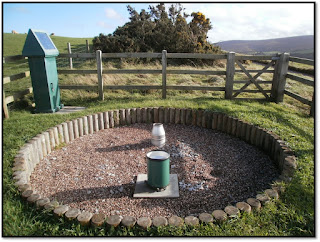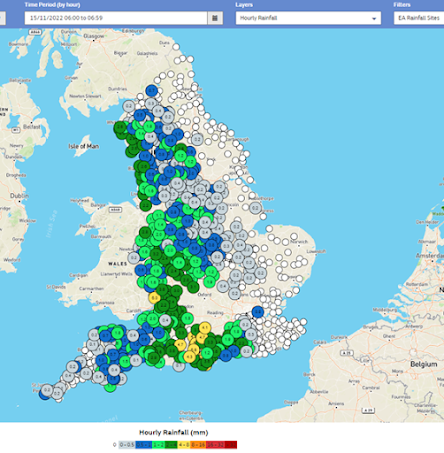The Met Office and Environment Agency have a long history of working together in partnership. One of the many things that unites the two agencies is our involvement in citizen science, and our networks of voluntary observers, such as those that contribute to WOW.
A Rainfall API* from the Environment Agency is now available, providing accumulated rainfall totals from this network at 15-minute intervals.
By
selecting an individual site from the map, more detail can be seen, with the
hourly total separated into 15-minute accumulations.
The data can be analysed further in a tabular view by selecting ‘view’ or ‘view full observation’. Please note that there are three rainfall parameters available in WOW, see below for their definitions. It is the ‘Rainfall (mm)’ parameter that is used for this particular data set.
Rainfall (mm) - Accumulated rainfall since the last observation. In the case of this Environment Agency data this is a 15-minute accumulation.
Rainfall Amount (mm) - Rainfall accumulated in a 24-hour period, this parameter is provided by some automatic weather stations.
Rainfall Rate (mm/hr) - An instantaneous rainfall rate, this parameter is provided by some automatic weather stations.
Hourly rainfall accumulations are used by Meteorologists, and Hydrometeorologists, such as those in the Flood Forecasting Centre (another Environment Agency and Met Office partnership). Rainfall observations on the ground are used in combination with rainfall radar data. Monitoring rainfall is essential to inform future weather and flood forecasts and warnings.
https://www.metoffice.gov.uk/weather/guides/observations/how-we-measure-rainfall
Since
this data set has become available, the number of observations received by WOW
has increased significantly from 1.2 million observations per day in September
2022, to 1.35 million observations per day in October 2022. The EA automatic
rainfall data accounts for roughly 150,000 of those daily observations.





